‘Day 1’: The One Thing You Should Do Right Do to Get Users to Stick With You
Jeff Bezos coined the term Day 1 for Amazon. Bezos’s Day 1 represents a mindset of organizational speed and customer obsession. It’s a mindset and a concept to keep the team sharp. As a behavioral scientist that has consulted for Google, Microsoft, LinkedIn, Intuit, Paypal, and dozens more consumer tech companies, I’m convinced that product managers and designers also need to have a focus on Day 1, but not a conceptual Day 1 — literally Day 1 of product usage.
There’s no other time that customers are more motivated to explore and use your product than on Day 1. Sadly, many product managers and designers view onboarding as an after-thought. But when you understand the psychology behind what drives your customers you view onboarding as the most important product experience to get right.
Why Day 1 Matters
1. Momentum
On Day 1, your customers have momentum.
Something triggered them to download/start using your product. On Day 2, they need to remember to log in and why they thought it was important. And as most PMs intuitively understand, you’ll get more people to say yes to features on Day 1 than if you email them two weeks later.
2. Sunk Costs
On Day 1, your customers have sunk costs.
The sign-up flow took a few minutes, and they want to ensure that wasn’t time wasted. They might as well explore the app and see what the new toy offers. On Day 1 you have to convince me to click “continue.” On Day 2, you have to convince me to log in and thus prove yourself worthy over all the other things they could be doing at that moment.
3. Mental Models
On Day 1, your customers have no mental model.
They don’t know what to expect from you yet. On Day 1, you get to create a new mental model. On Day 2, you have to change the mental model you just created on Day 1.
Most product designers grasp the first two ideas — momentum and sunk costs. What most don’t yet grasp is the critical importance of mental models on engagement and retention outcomes.
What Are Mental Models, Anyway?
Basically, a mental model is a “deeply ingrained view of how the world works or doesn’t work.”
There are mental models for how much to talk to children, what risks to insure, what to save for, what the climate is like, and what causes disease.
The World Bank summarizes it nicely:
‘Individuals do not respond to objective experience but to mental representations of experience. In constructing their mental representations, people use interpretive frames provided by mental models. Using a different mental model can change what an individual perceives and how he or she interprets it.’
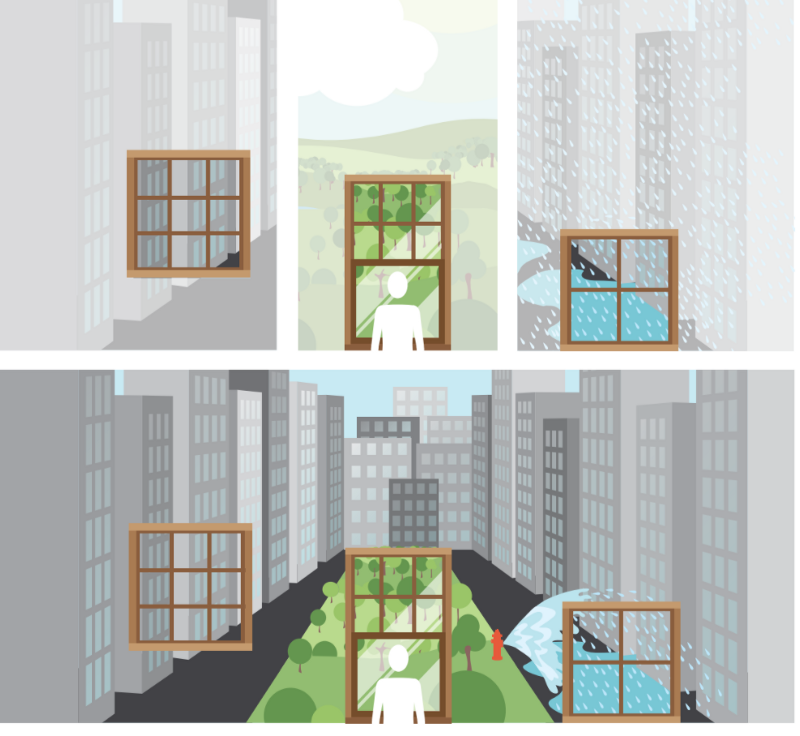
Let’s get practical and look at some examples of mental models:
Example 1: Money
We have a strong and engrained mental model of how money works. The mental model for money is: “I work to get money, so I can spend it on basic needs and wants.”
One reason Universal Basic Income (UBI) has had trouble gaining broad social acceptance is that it conflicts with our mental model. Instead of “I work to get money,” UBI says, “I exist, so I get money for basic needs.”
Example 2: Social Distancing
We currently have a mental model for social distancing — staying 6 feet away from other human beings.
Now imagine I try to change your mental model of social distancing. Instead of saying it means being 6 feet apart, I tell you distance doesn’t matter — you just can’t face someone else directly.
This would’ve been an easy change to make in March when the pandemic was just starting in the U.S. and the term “social distancing” was just coming to life. But now? It would be incredibly difficult. I’d have to fight against the 6-feet idea that has anchored itself, in addition to championing the don’t-face-someone-directly idea.
It Takes Work to Change Mental Models
In some cases, it can be done through a narrative change.
Mental models can also be changed with the brute force of effort and time.
- In one study, community health workers in a rural town made weekly home visits to teach mothers how to play and interact with their children in ways that better promote cognitive and emotional development. These children ended up earning 25 percent more as adults than those who didn’t get visits. This is impressive — but it also required weekly visits over years and years (Gertler and others 2014).
- Another example comes from India — political affirmative action for women changed the make-up of leadership to include more women. After seven years of exposure to women as leaders, men’s bias against women decreased (Beaman and others 2009, 2012). Seven years!
So, while it’s possible to change existing mental models , it’s hard!
Of course, when we apply this to tech (vs. gender norms) it may be incrementally easier, but it’s still tough. Want to change Microsoft to be a brand like Apple? That’s hard. Even changing VRBO to be more like Airbnb is a heavy lift.
But as a new product or startup, you have the opportunity to establish your own mental model from Day 1. You create the narrative about your product. As a new product, you don’t have to rewind people’s mental models, you start with a blank canvas.
How to Establish a Mental Model on Day 1
Being able to create a mental model for your customers is a key advantage you have over existing, entrenched products. The catch? You have an incredibly short time period within which you can set a mental model- going back to a user on Day 30 will likely fall flat. They have already engrained their habits and mental model.
There are three ways to create the right mental model for your users on Day 1:
1. Expose All the Benefits Upfront
As a new customer, I may only be interested in one feature of your product. However, as time goes on, my needs may change. If my mental model is only about the one feature I love today, it’ll be hard to get me to use others in the future.
To overcome this, expose the range of benefits your product offers in the onboarding flow. Users may not engage with all of them immediately, but it establishes the right mental model (that you’re not a one-trick pony).
ClassPass does this nicely by asking me to choose what types of workouts I want to do. This builds a mental model that they offer different kinds of classes.
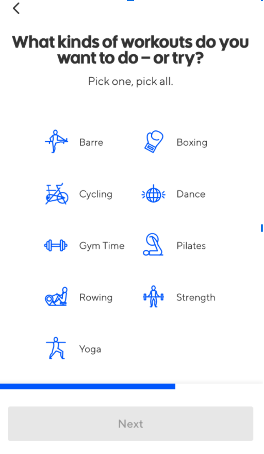
The app Notion does this by pre-creating different types of documents. At first glance, I might think Notion is just a note-taking app, but these templates make it clear I can use it for much more.
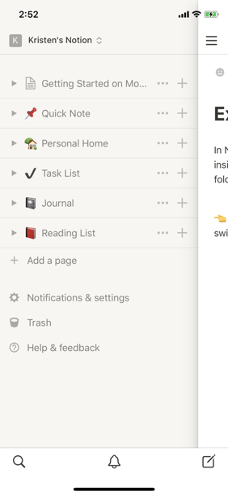
Use Explicit Signaling
The mental model most people have of insurance companies is that of an adversary (not a trusted friend). Many of us suspect that submitting an insurance claim will be annoying, and getting full reimbursement will be an uphill battle.
When Lemonade, a renters insurance company, launched in 2016, they wanted to change the mental model customers had of insurance companies.
Not easy.
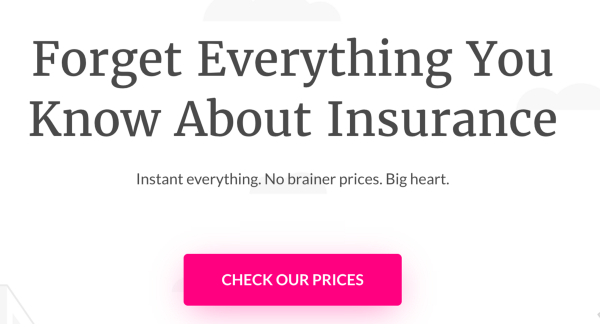
To explicitly signal they were different, they took a big swing: they changed their own incentive model. Lemonade decided to donate some of their profits to charity, thus removing their profit incentive to deny claims. This signaled to customers that 1) they’re not a typical insurance player, and 2) they can be trusted to do the right thing.
Signaling is especially important when you’re looking to create a new mental model in an industry with an already established one. For example, Chime and Varo are online banks. To distance themselves from the “big five” (Wells Fargo, Bank of America, etc.), Chime and Varo don’t charge overdraft fees. Period. This signals to potential customers that they’re different, and creates a new mental model about how a bank should behave.

Use Implicit Signaling
The language-learning app Duolingo uses specific phrasing to establish the mental model they want. “Regular: 10 minutes a day” tells you this is NOT an app that requires hours of practice a day. However, it creates the mental model that this is an app you should be using every day.

The dating app uses empty circles to let you know you’re “doing it wrong” if you’re only messaging one or two people. They’re creating a mental model that you should be messaging multiple people.
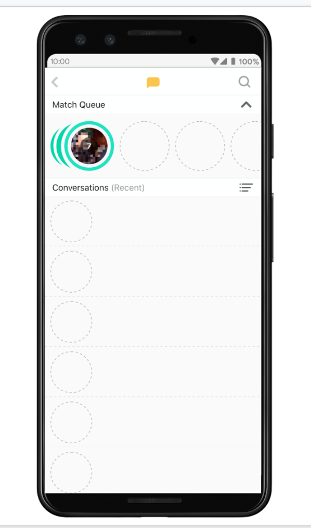
Conclusion: The right mental models help both you and your customer
Mental models are a bit like windows in a house. If you look outside from one window, your view is different from another.
As product designers, we get to build the windows, and the customers get the view! The good news is that it’s incredibly easy to build windows on Day 1 — the customer’s view is unobstructed. On Day 2, the customer is already used to the window and the view. To change it, you’d need to build a new mental model for them. It’s possible, but it’s much harder than on Day 1.
In other words, build the right mental model from the beginning, and you’ll be a model of success.
Want to know more about how to increase retention after Day 1? Check out our Bootcamp.
The Behavioral Economics Bootcamp is an online course for those who want to use behavioral insights to drive behavior change. It’s great for product managers, marketers, designers and engineers that are managing teams and projects. You’ll learn the frameworks and tools that drive your KPIs.
